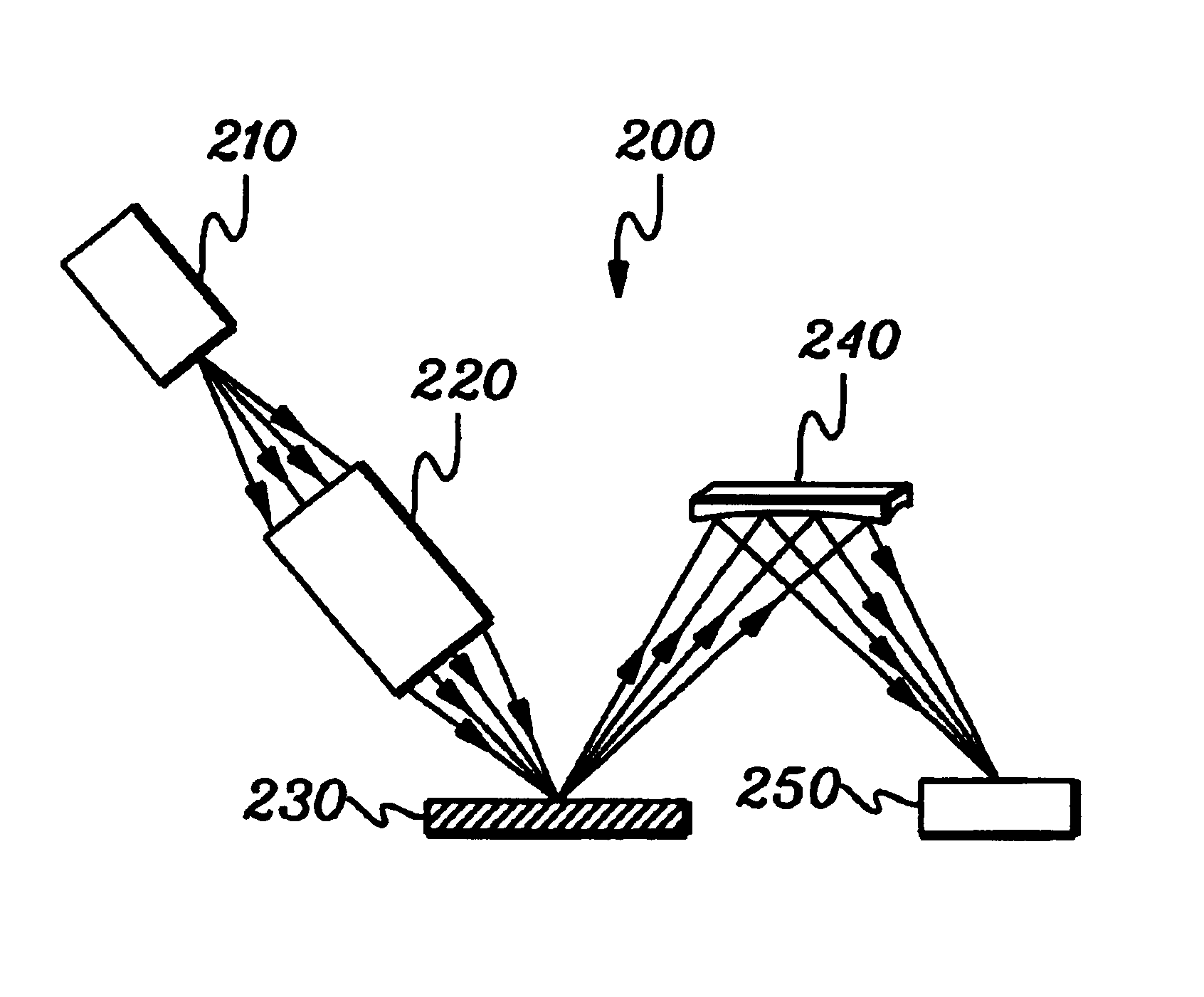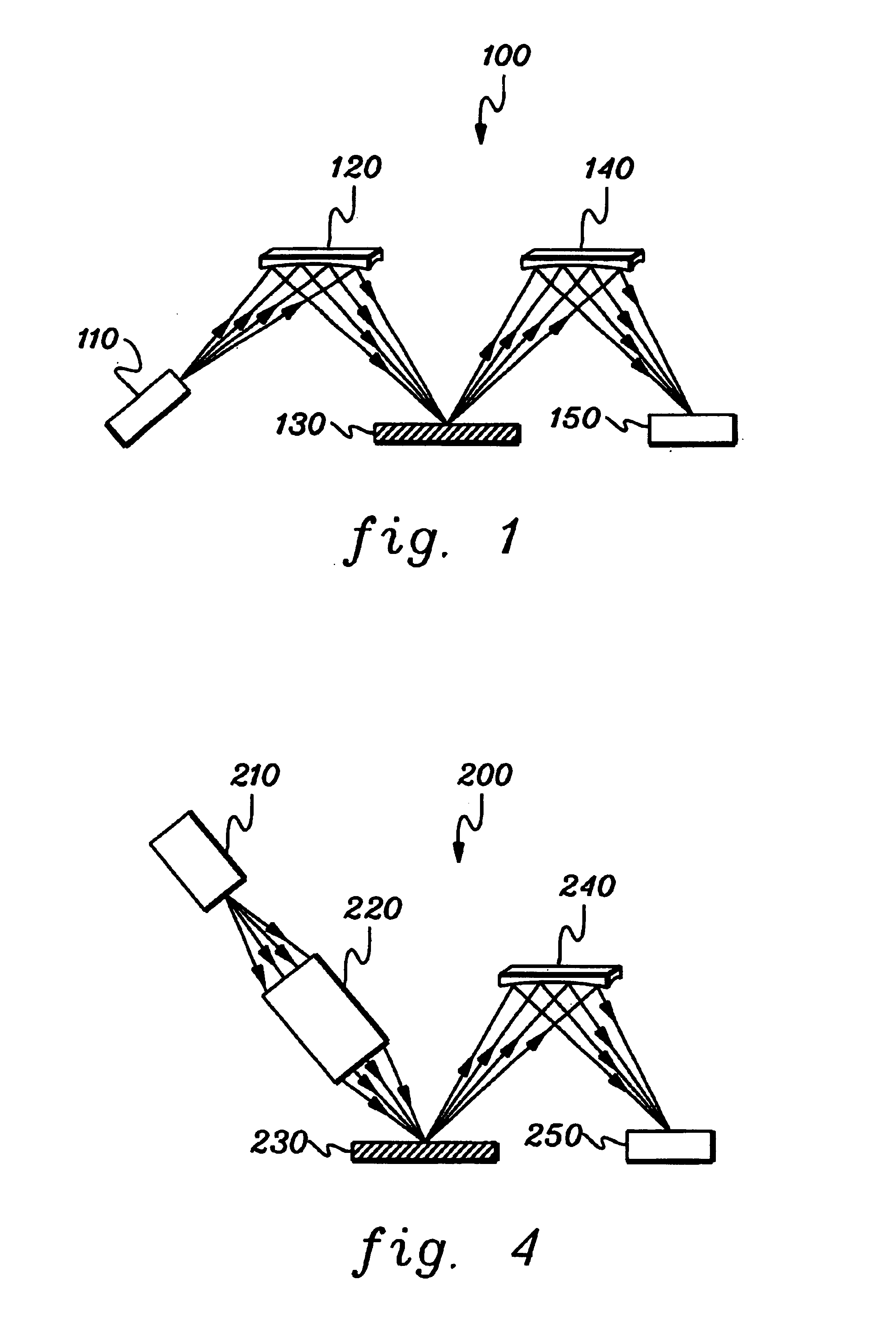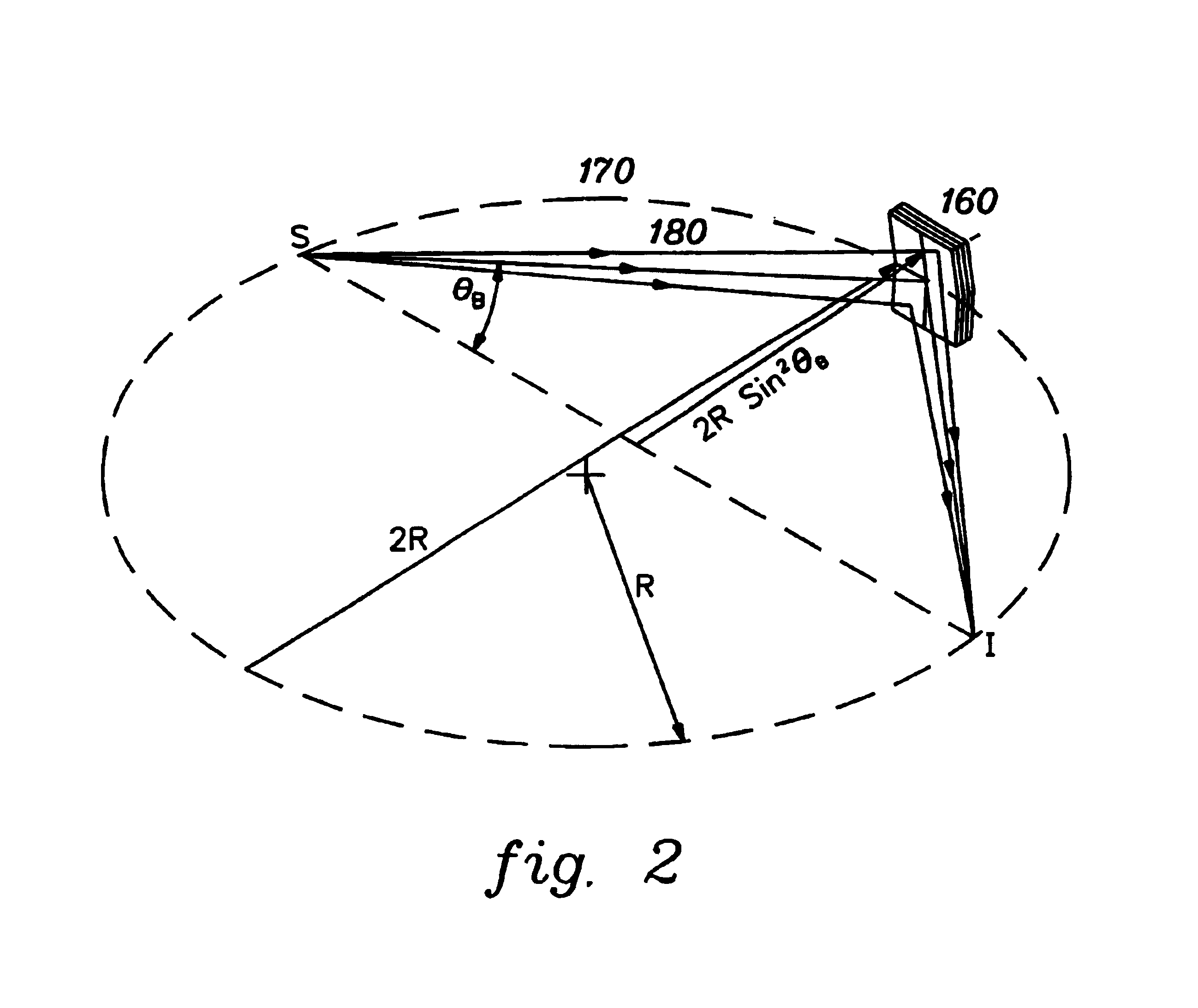Wavelength dispersive XRF system using focusing optic for excitation and a focusing monochromator for collection
a focusing monochromator and wavelength dispersive technology, applied in the field of xray fluorescence (xrf) spectroscopy systems, can solve the problems of poor sensitivity, poor energy resolution, and vacancies that destabilize the atoms
- Summary
- Abstract
- Description
- Claims
- Application Information
AI Technical Summary
Benefits of technology
Problems solved by technology
Method used
Image
Examples
Embodiment Construction
[0036]Generally stated, one embodiment of a compact XRF / WDS system in accordance with an aspect of the present invention comprises an x-ray source, an excitation x-ray optic that focuses x-rays onto a sample from the source, at least one collection monochromator and an x-ray counter. The excitation x-ray optic can be a focusing polycapillary optic that provides polychromatic excitation or a point-focusing doubly curved crystal optic that provides monochromatic excitation. The collection monochromator (which can be a doubly curved crystal optic, a doubly curved multi-layer optic, or other doubly curved diffracting optic) selects a desired characteristic wavelength of an element. The intensity of the reflected x-rays is measured by a detector and is correlated to the concentration of this element in the specimen.
[0037]One aspect of an XRF / WDS system in accordance with the present invention is that the excitation optic can efficiently capture a large cone angle of x-rays from a point x...
PUM
 Login to View More
Login to View More Abstract
Description
Claims
Application Information
 Login to View More
Login to View More - R&D
- Intellectual Property
- Life Sciences
- Materials
- Tech Scout
- Unparalleled Data Quality
- Higher Quality Content
- 60% Fewer Hallucinations
Browse by: Latest US Patents, China's latest patents, Technical Efficacy Thesaurus, Application Domain, Technology Topic, Popular Technical Reports.
© 2025 PatSnap. All rights reserved.Legal|Privacy policy|Modern Slavery Act Transparency Statement|Sitemap|About US| Contact US: help@patsnap.com



